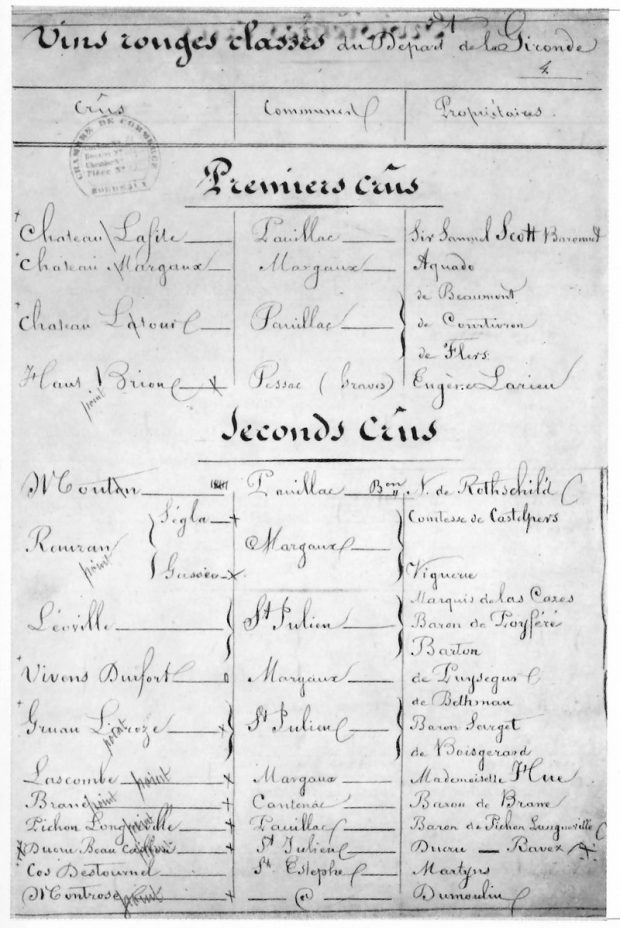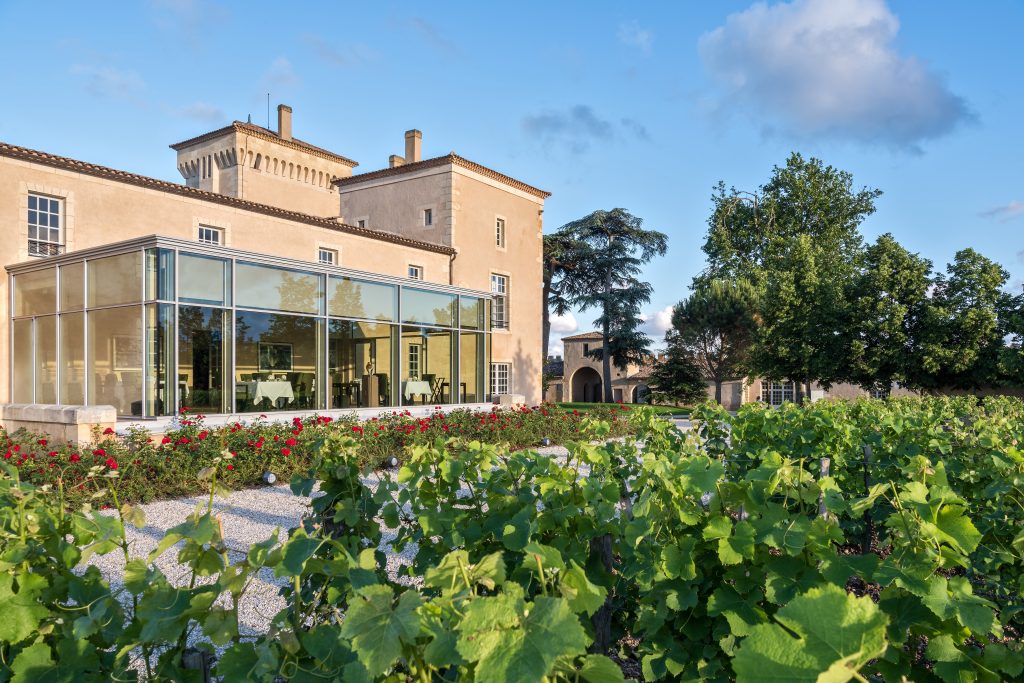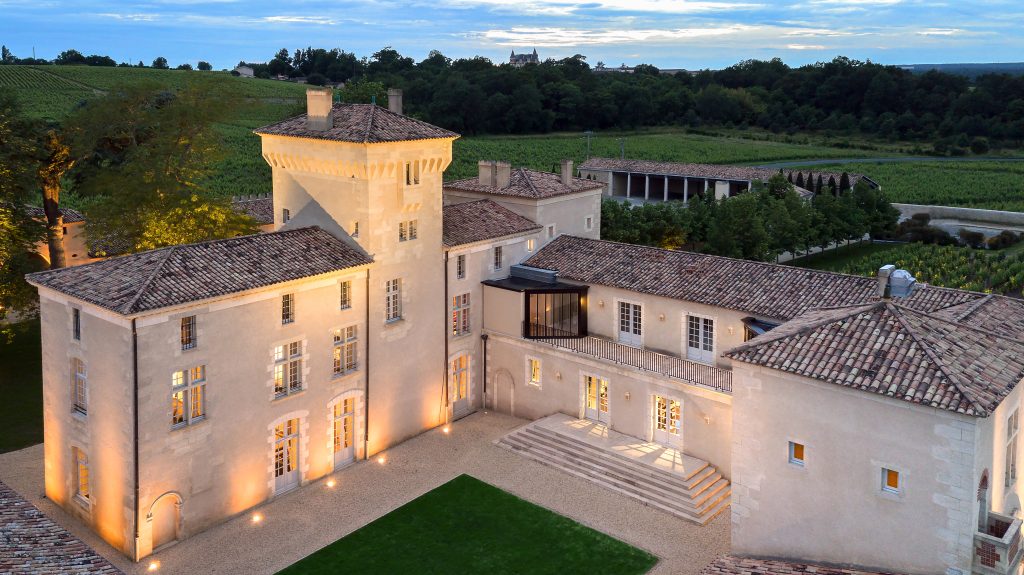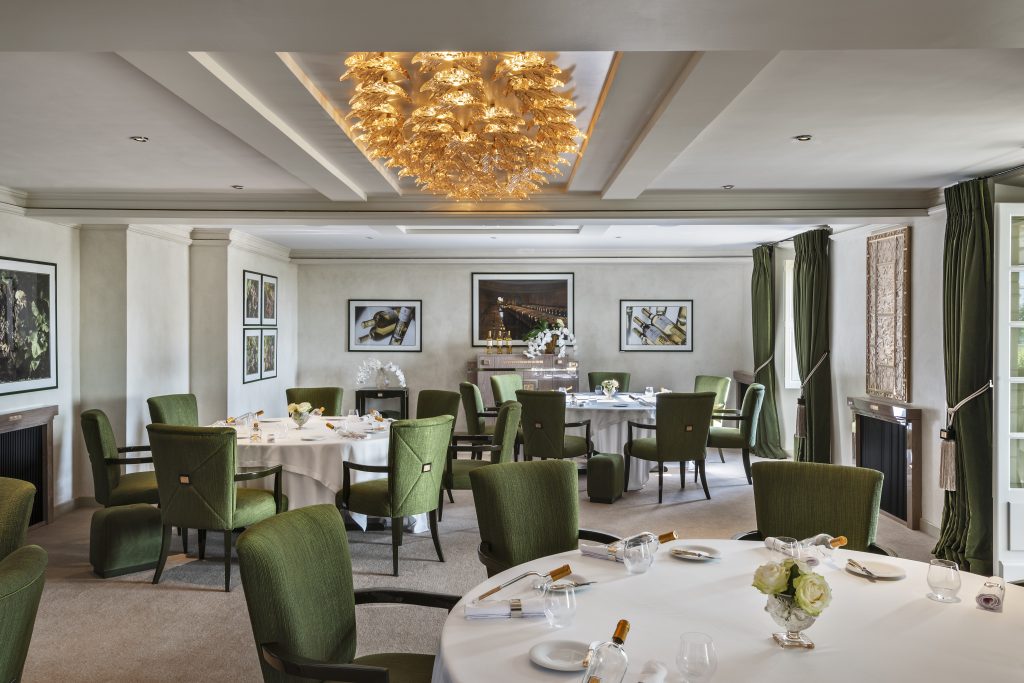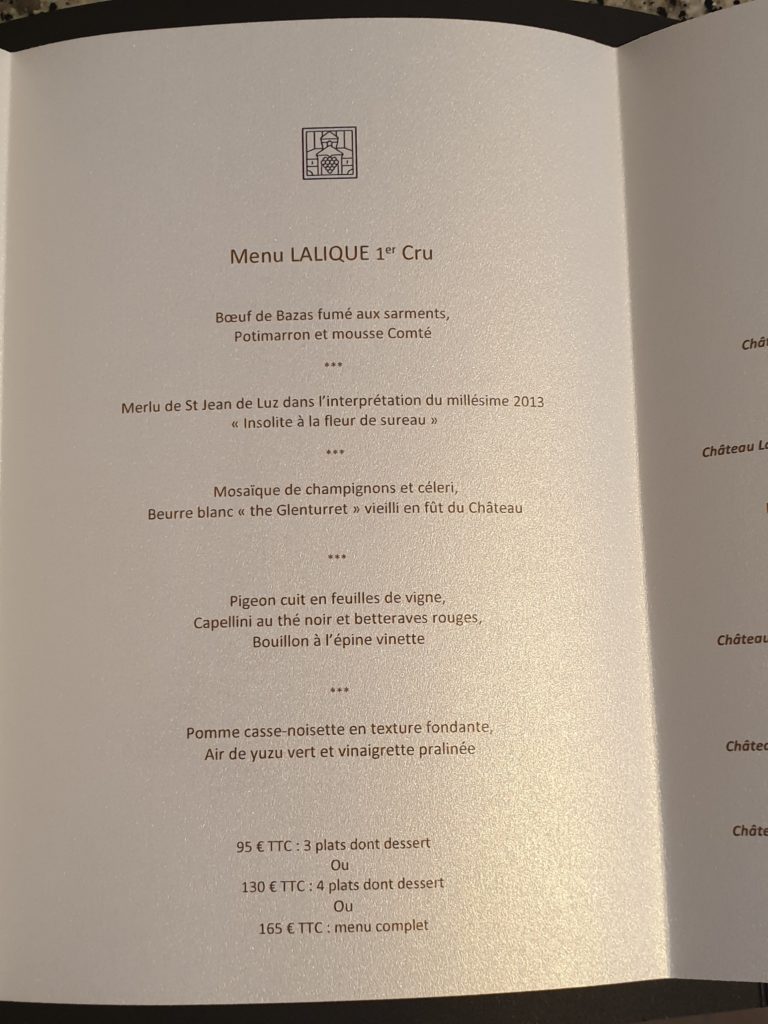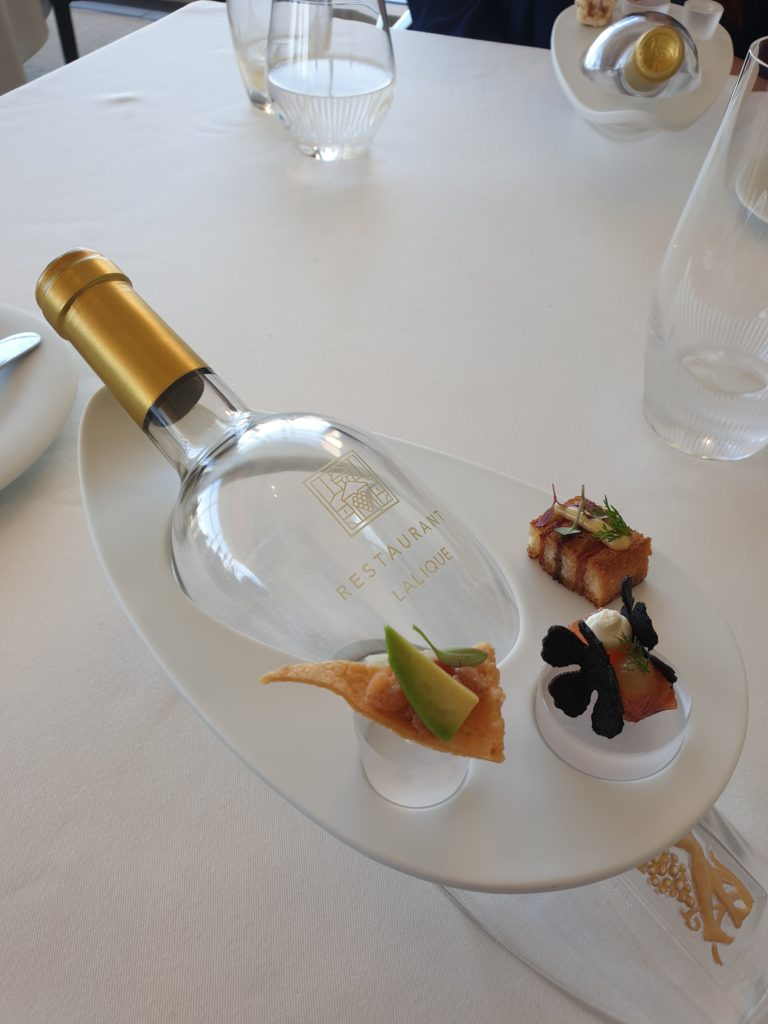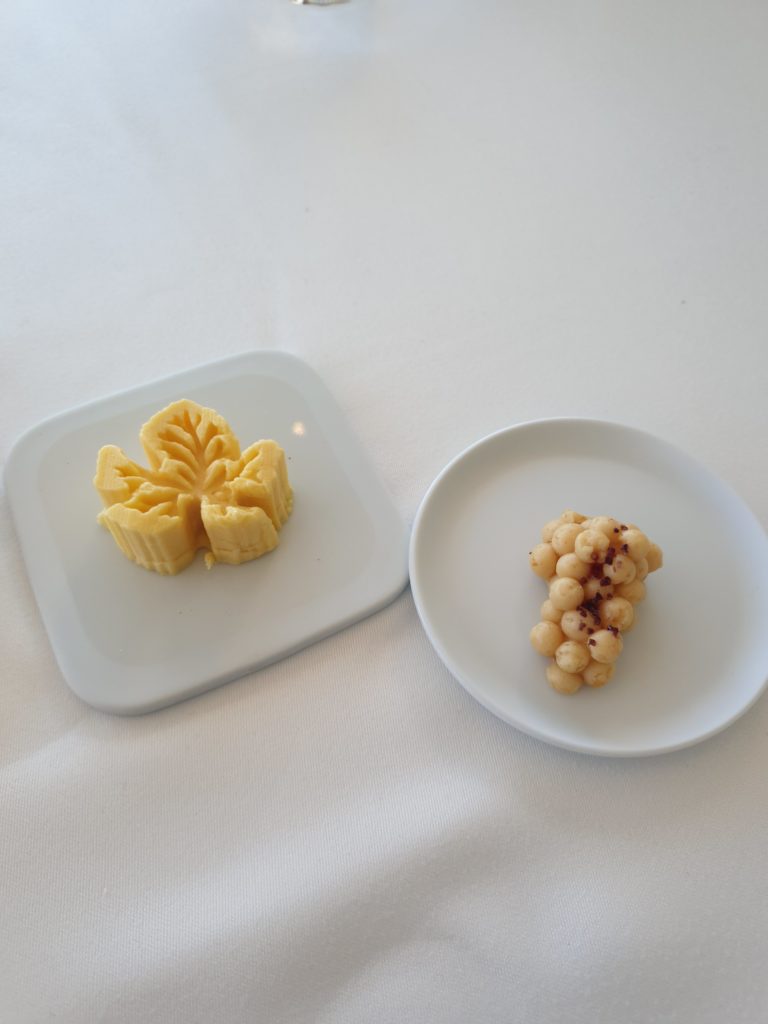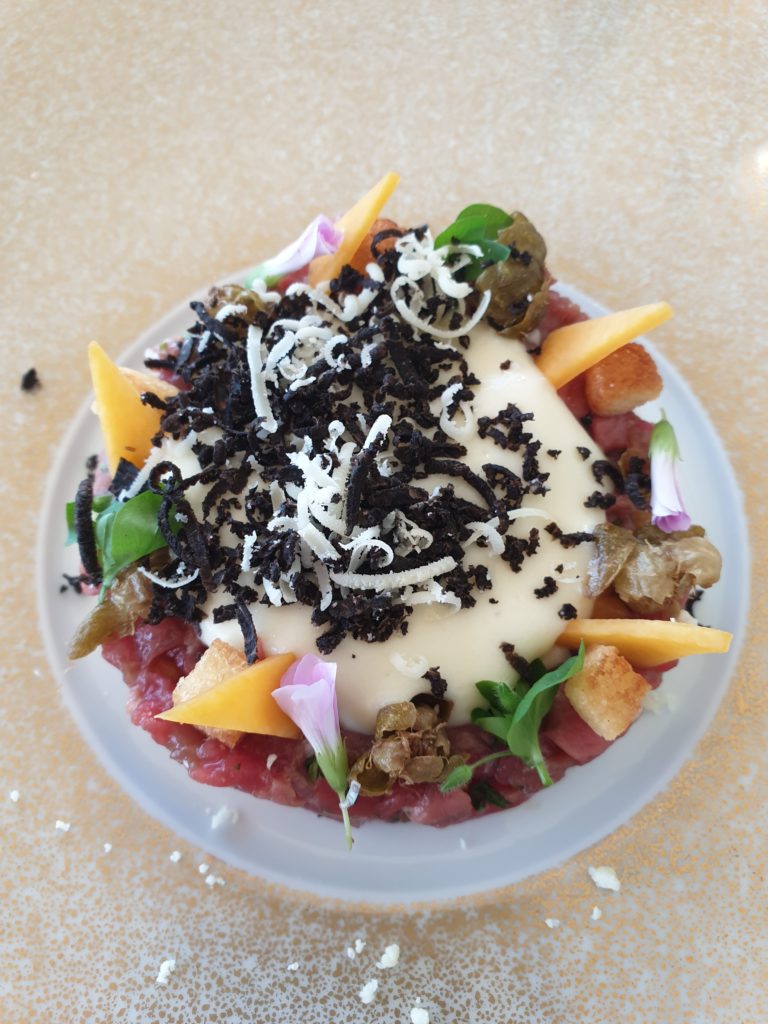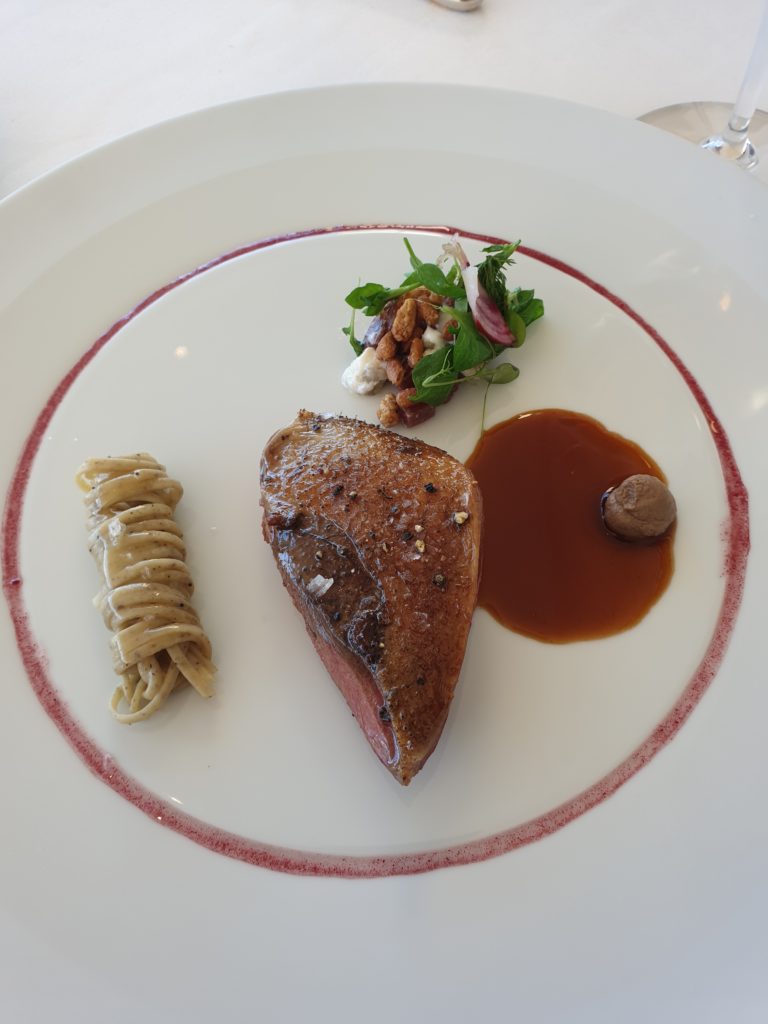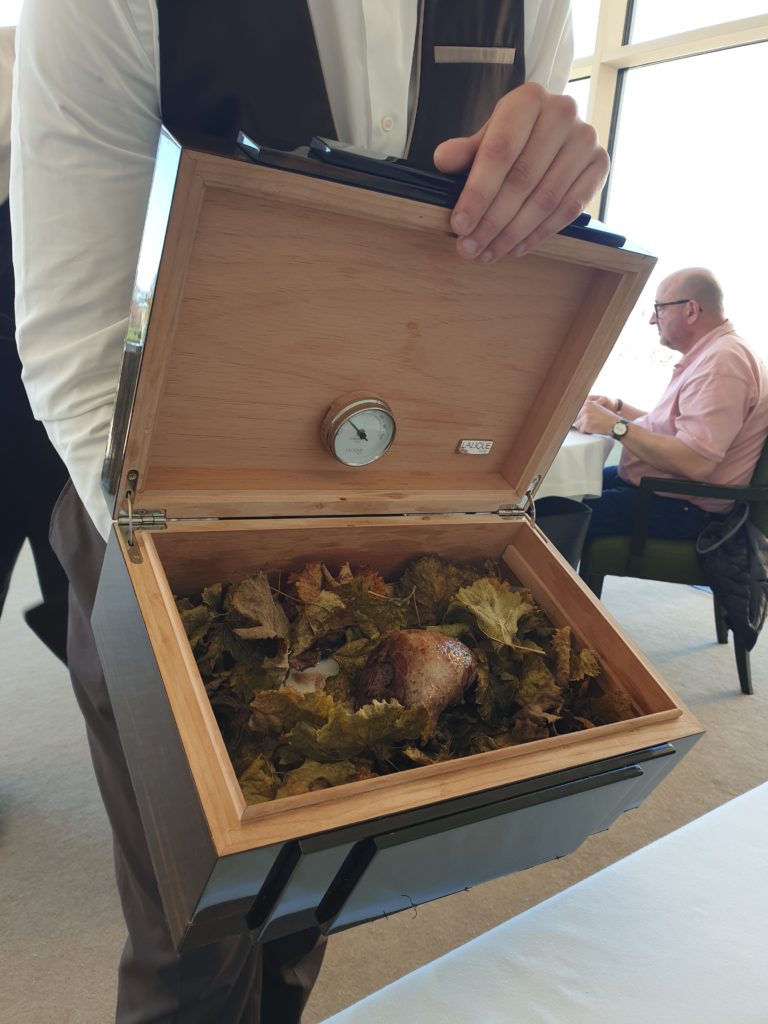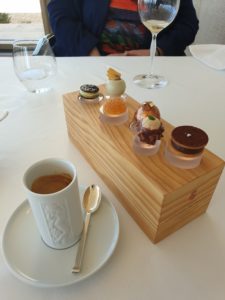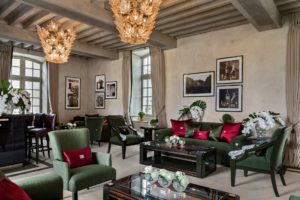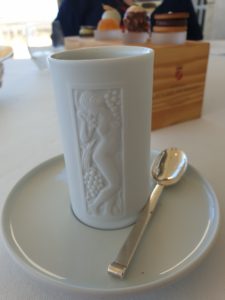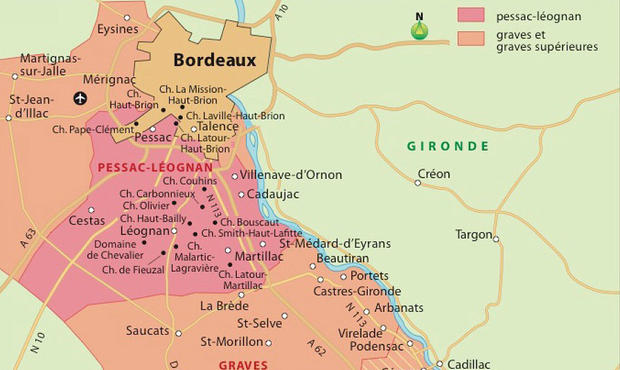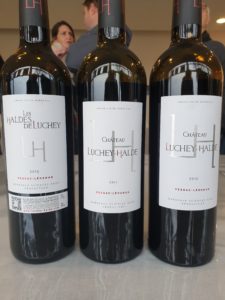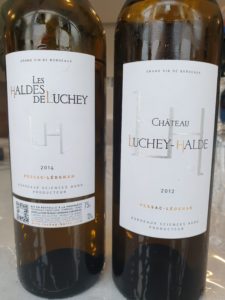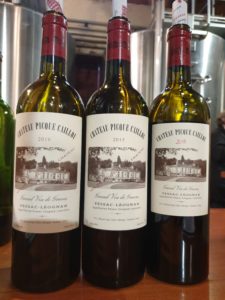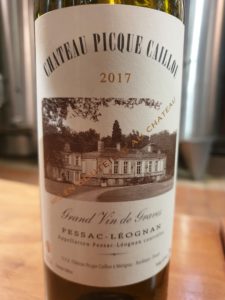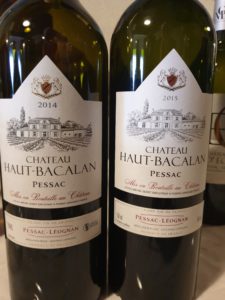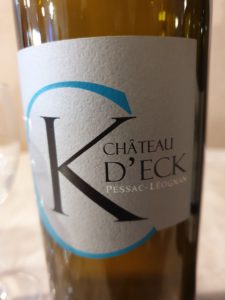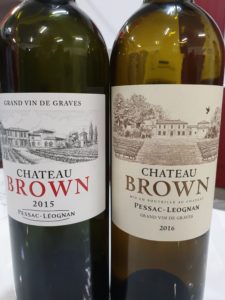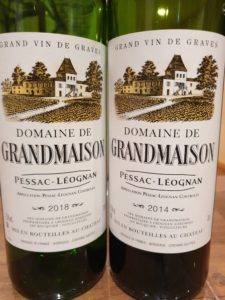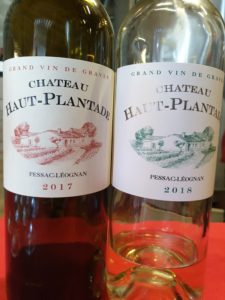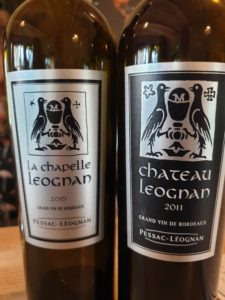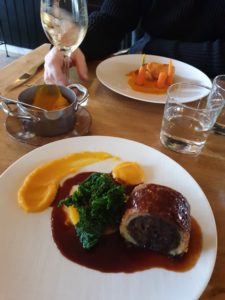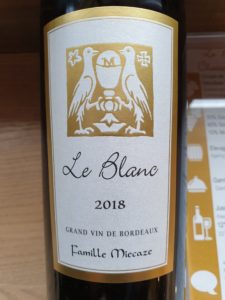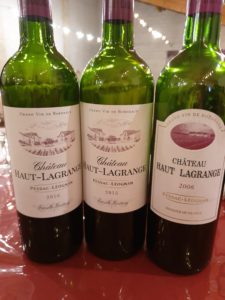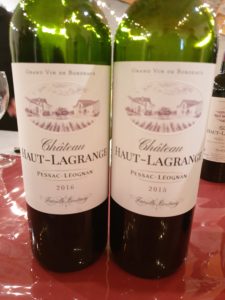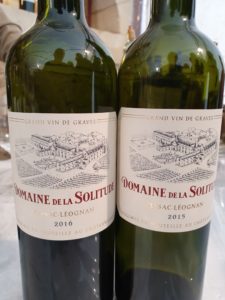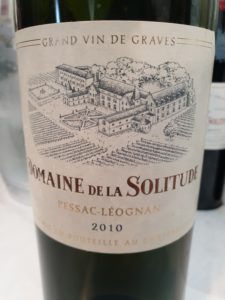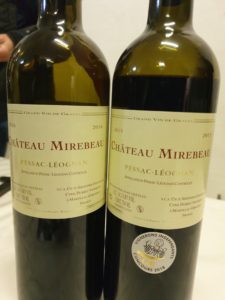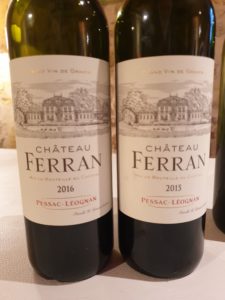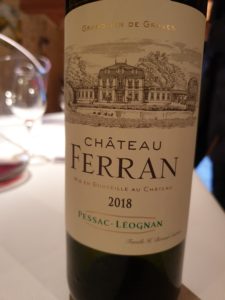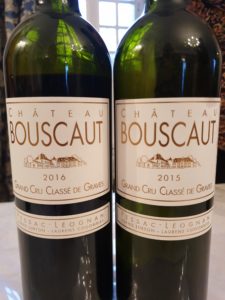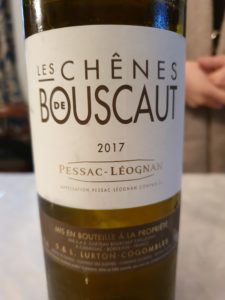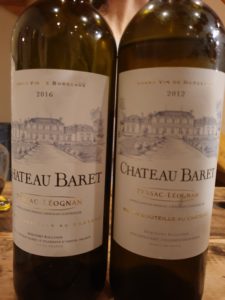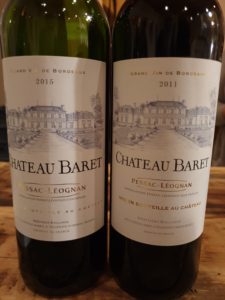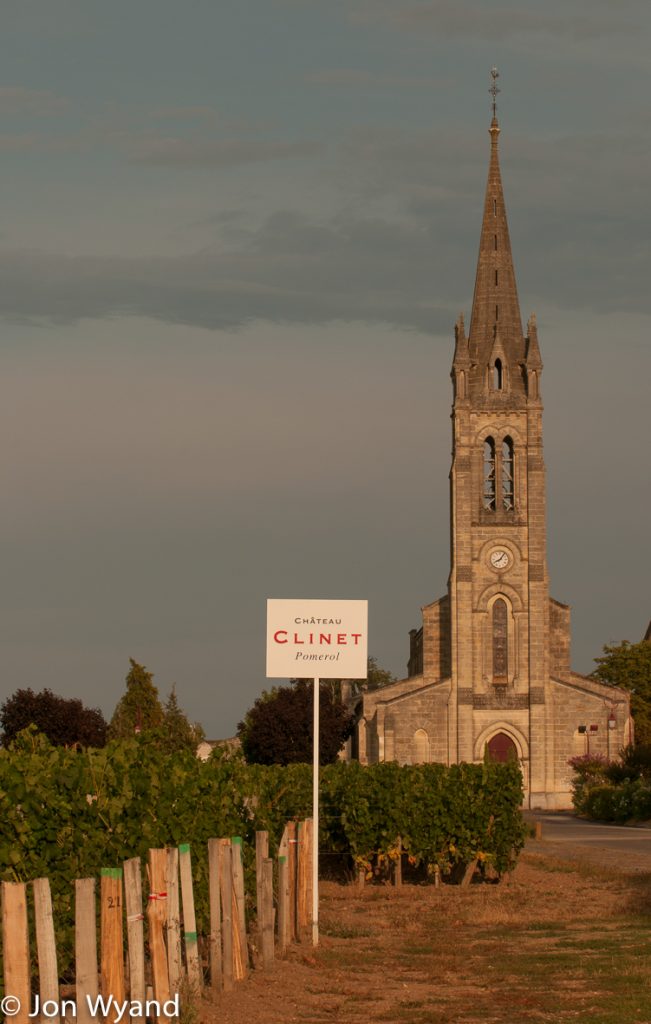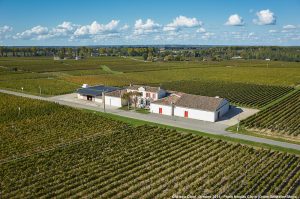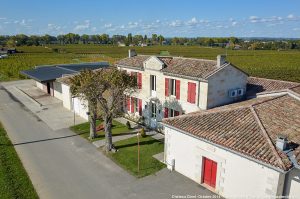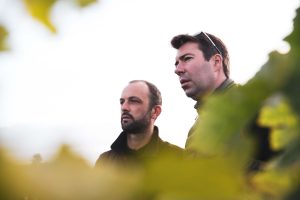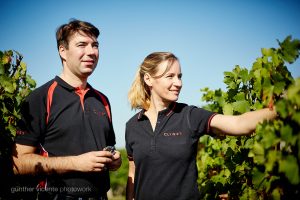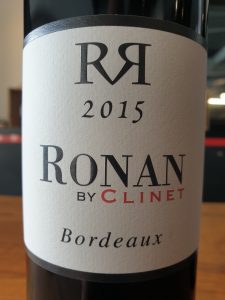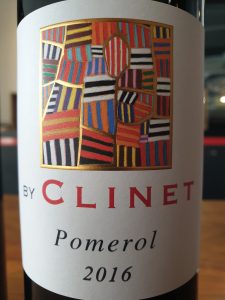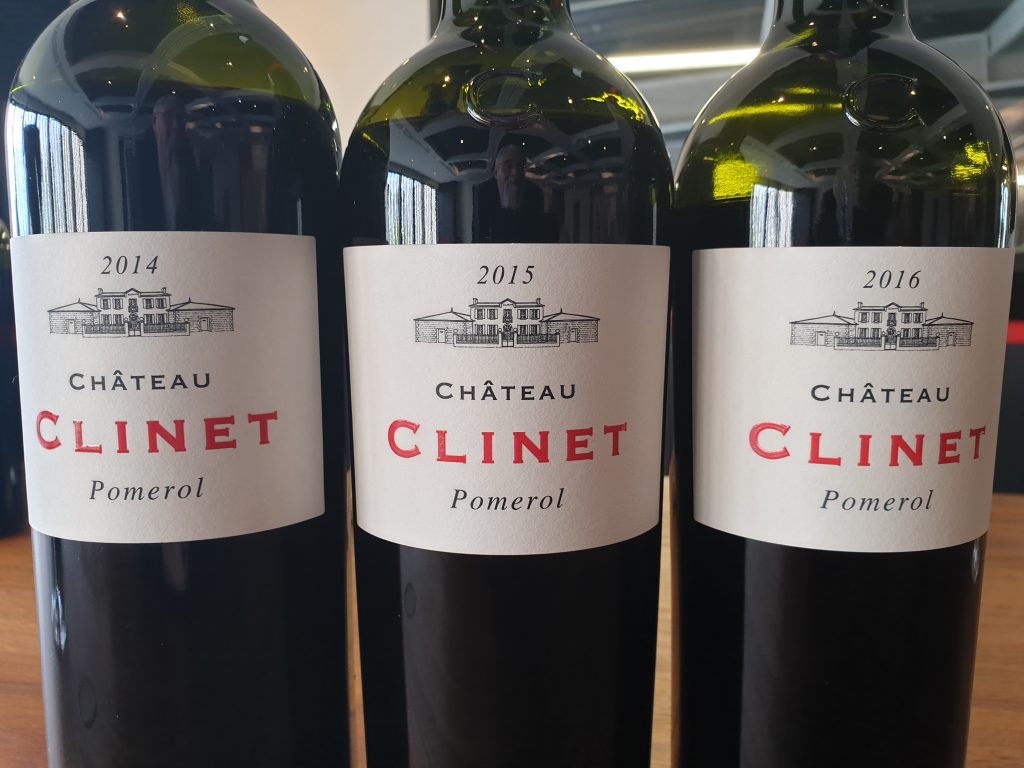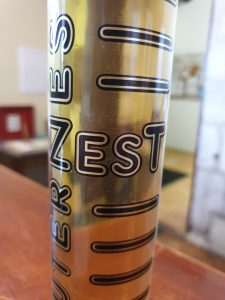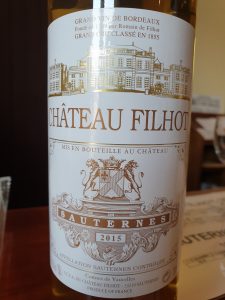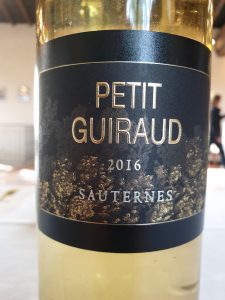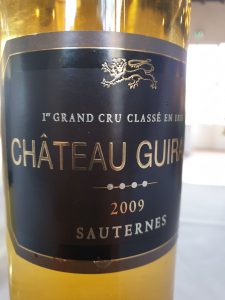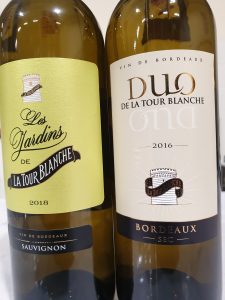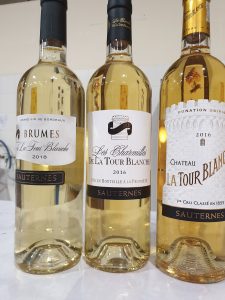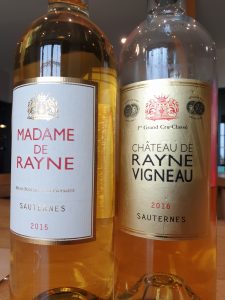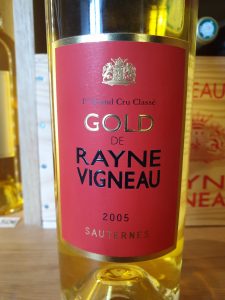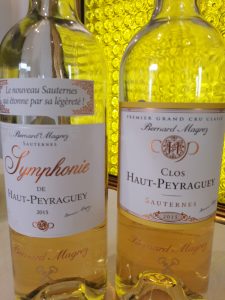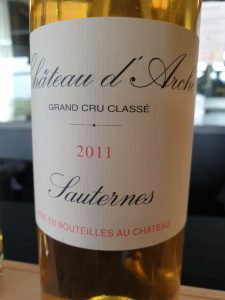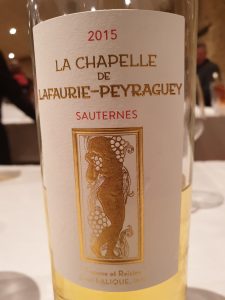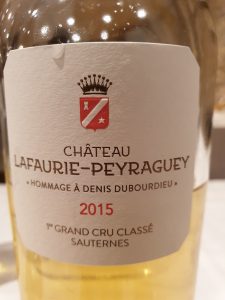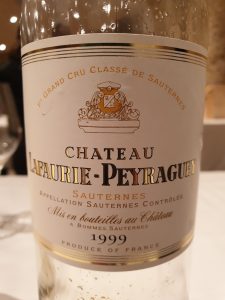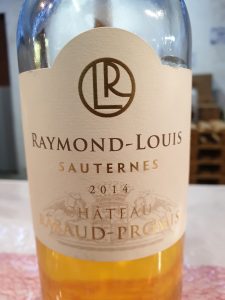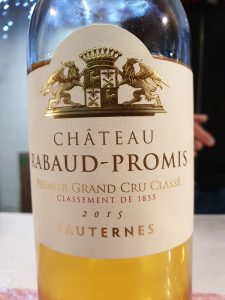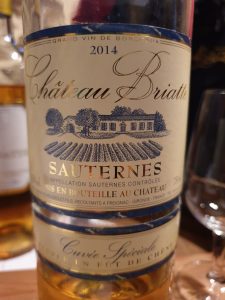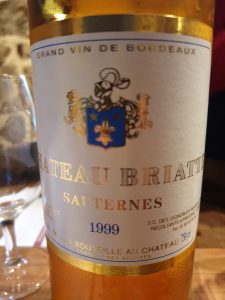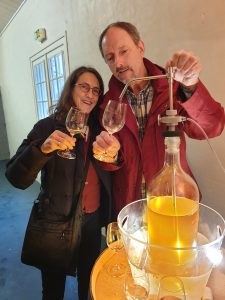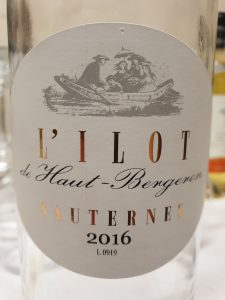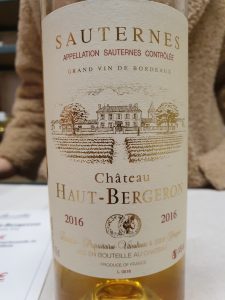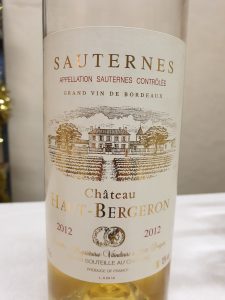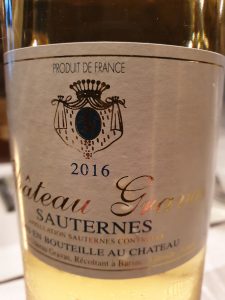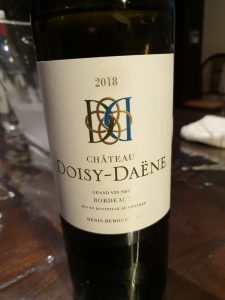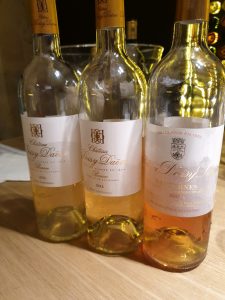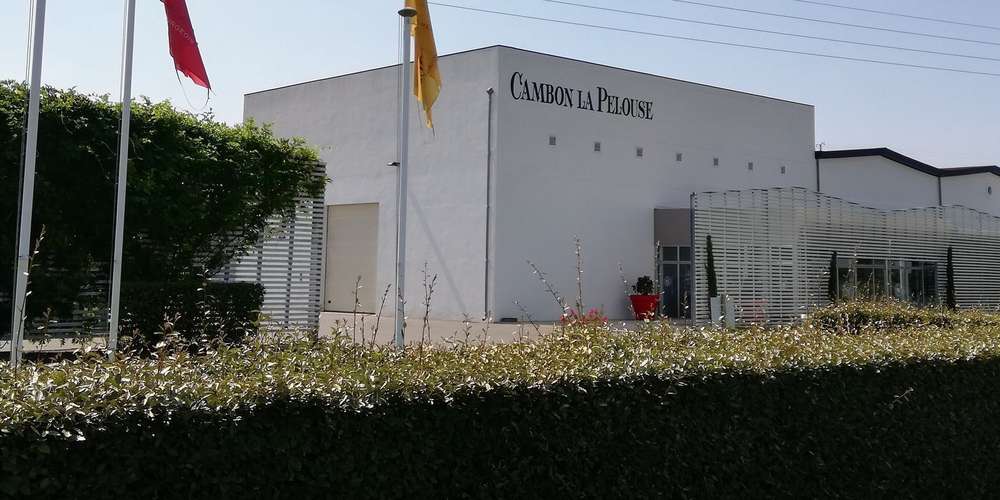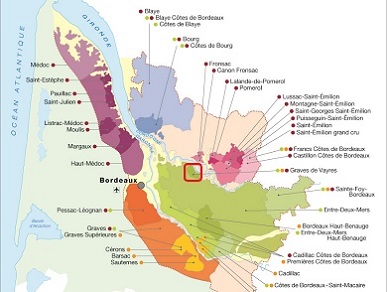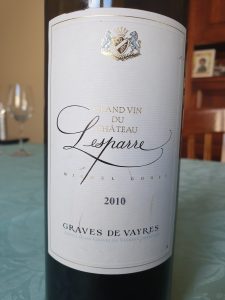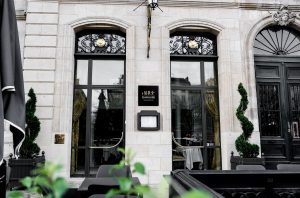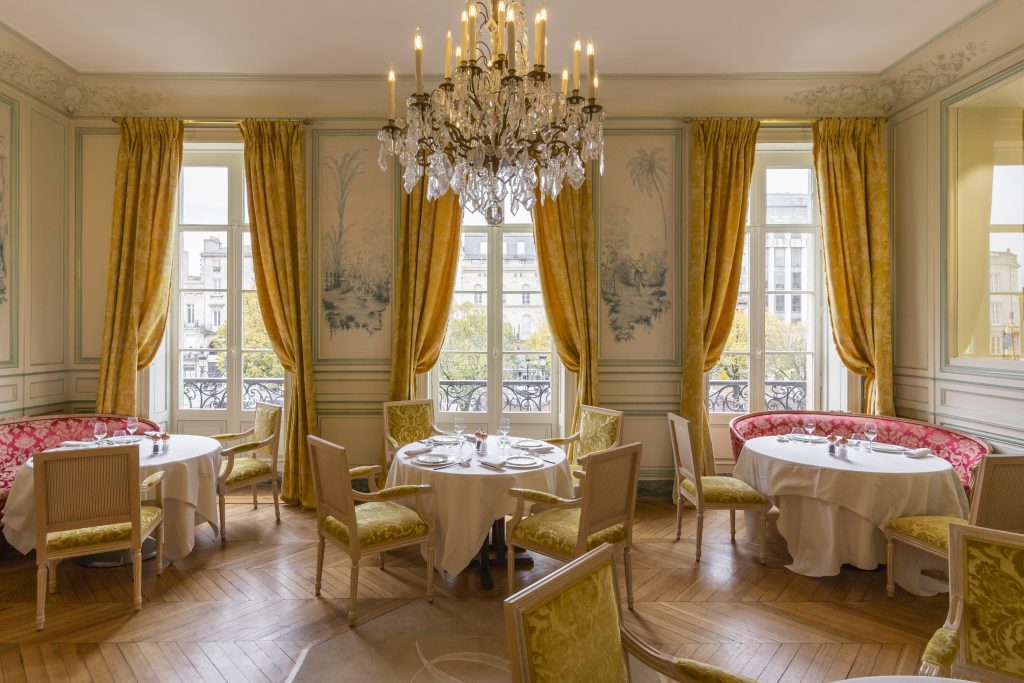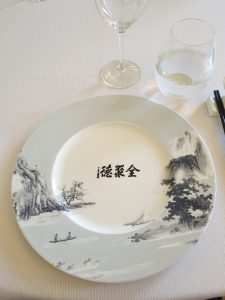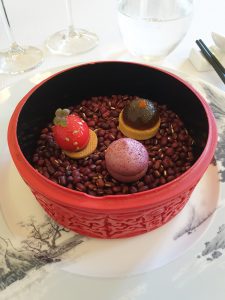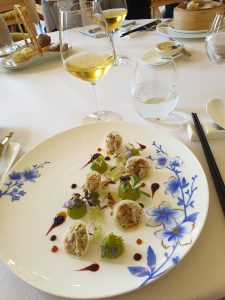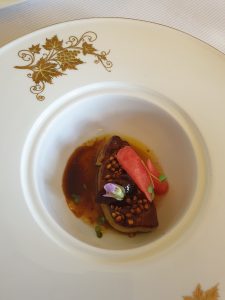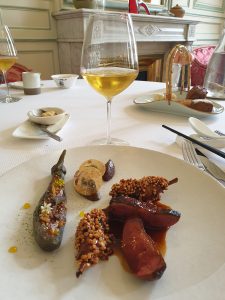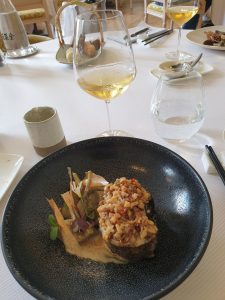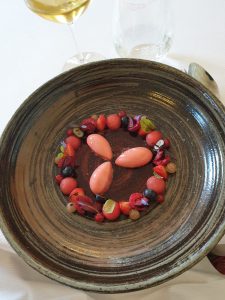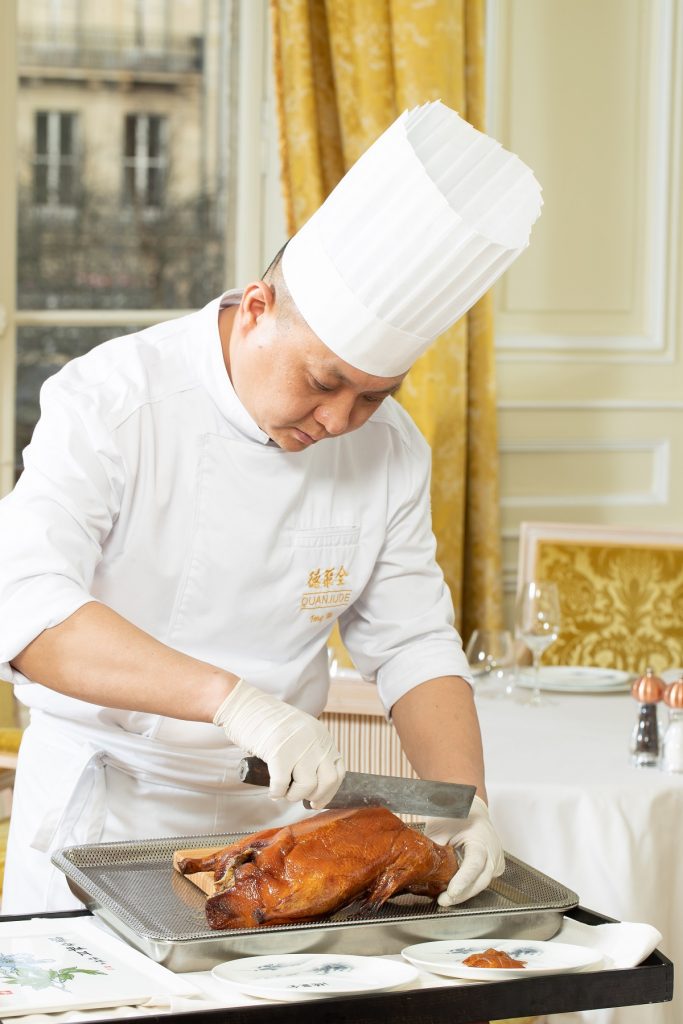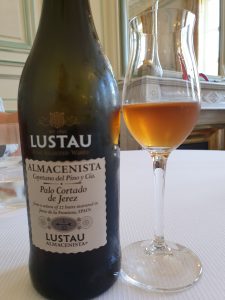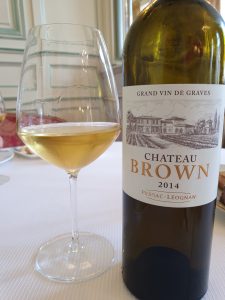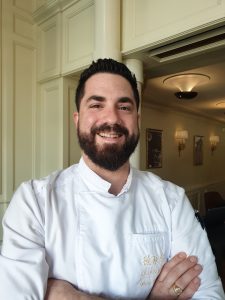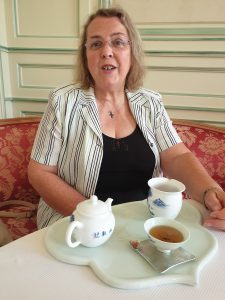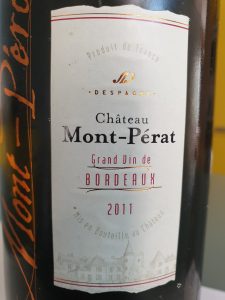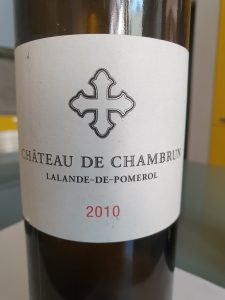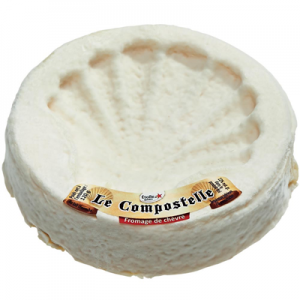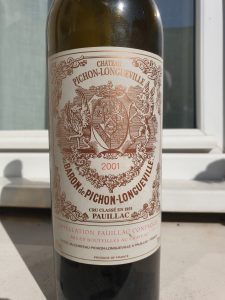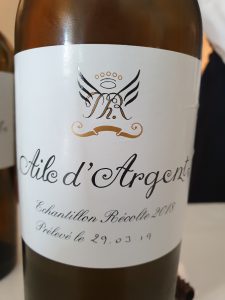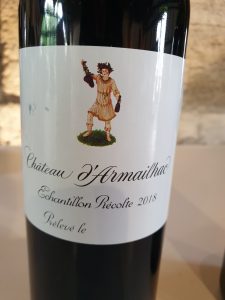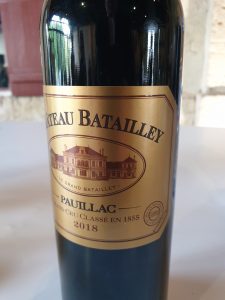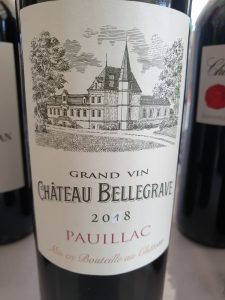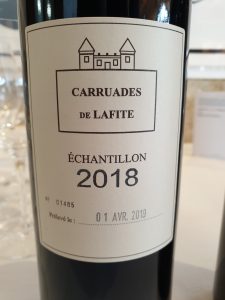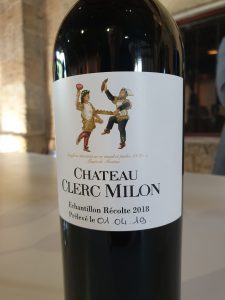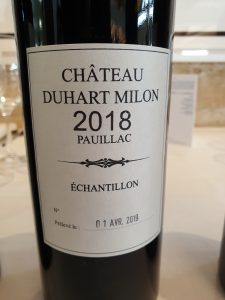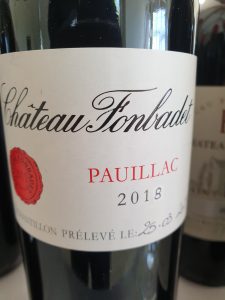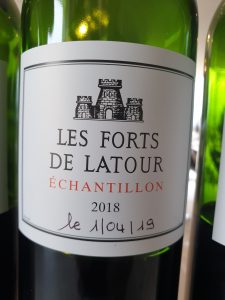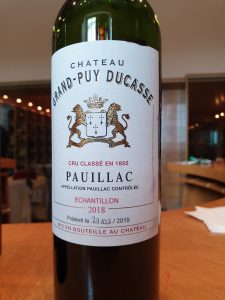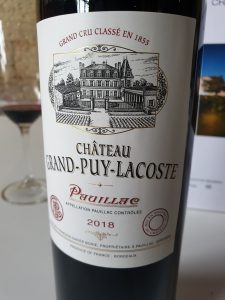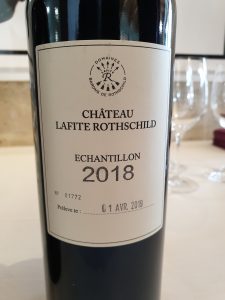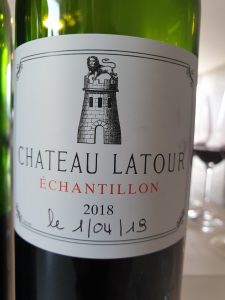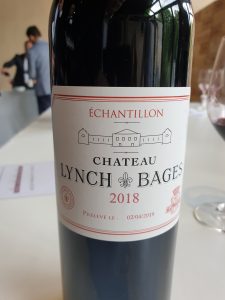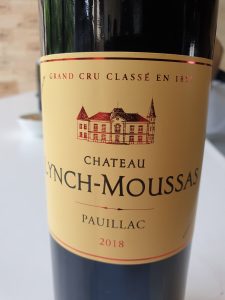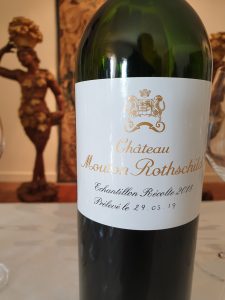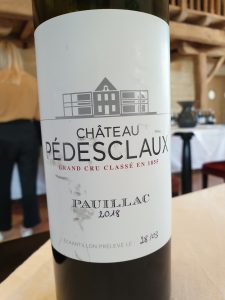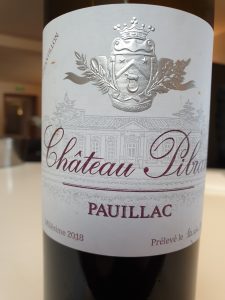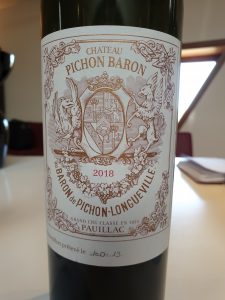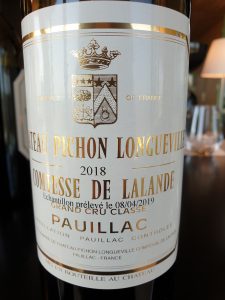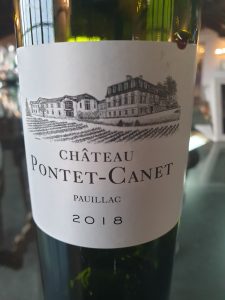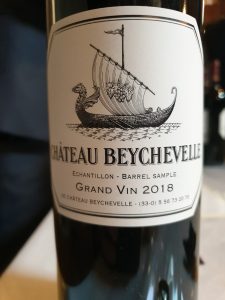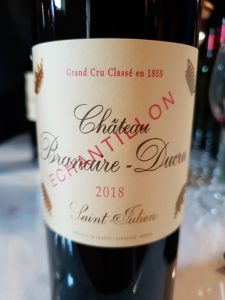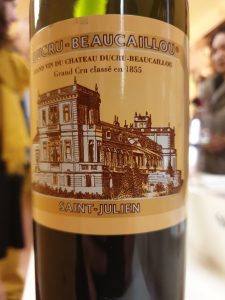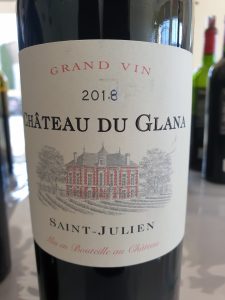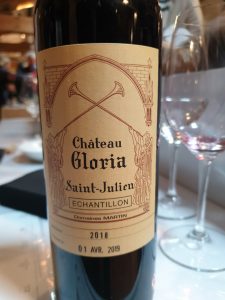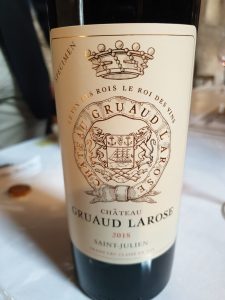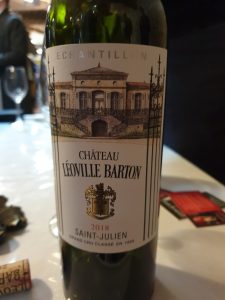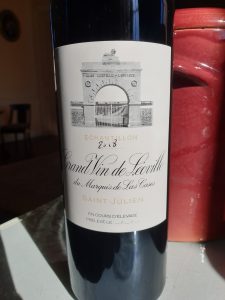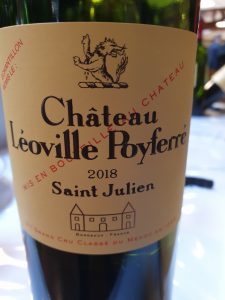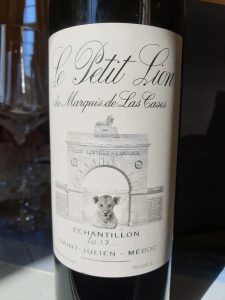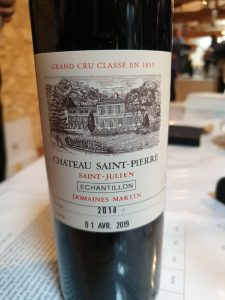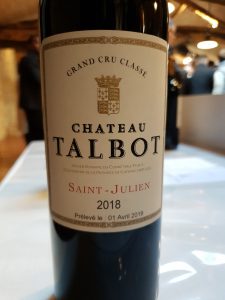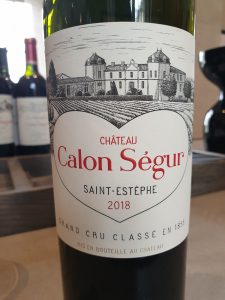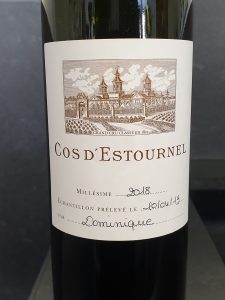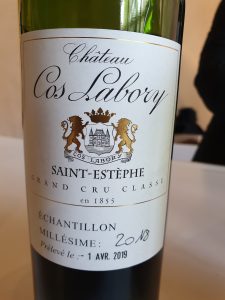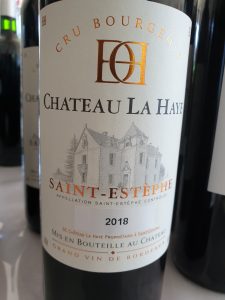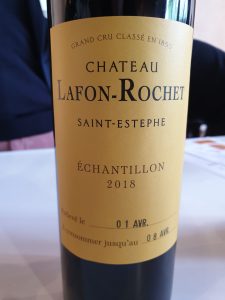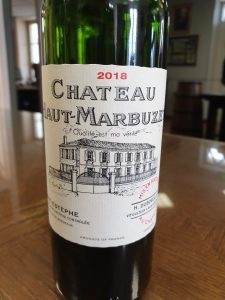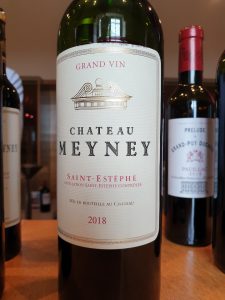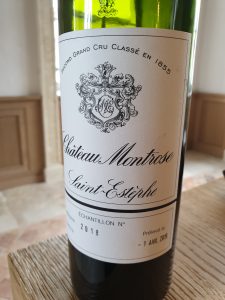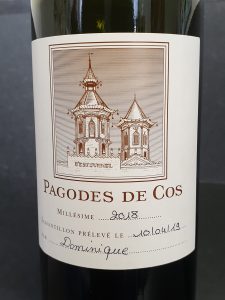PAUILLAC
Aile d’Argent (Bordeaux AOC)
C: Medium pale
N: Just about screams Bordeaux Sauvignon Blanc, along with a smoky quality.
G: Some oak, but not too much, and decent fruit and acidity, but this does not bespeak a great terroir. Good.
Château d’Armailhac
N: Not pronounced. Some Pauillac graphite aromas, but not much more.
P: Pretty and light. Dryish, slightly short aftertaste. Black fruit and some olive flavors. Good.
Château Batailley
N: Attractive, but simple.
P: Full-bodied, tangy, and very approachable. Zingy tannin and fine acidity. Candied fruit flavors and good tannic texture. Worthwhile potential, just needs time for the aromatics to come through more clearly. Good to very good.
Château Bellegrave
N: Penetrating pure Cabernet and candied red fruit aromas, but lacking definition at this point. Coffee, vanilla, crandberry, and blueberry nuances.
P: Full, a touch austere and a bit hollow in light of its body. Fluid. A commercial style, even though the aftertaste is fairly uncompromising and thus may indicate greater ageing potential than it at first seems. Good.
Carruades de Château Lafite
N: Subtle and sweet with cedar overtones and Lafite fruit (how to describe such a bouquet with words?) in minor mode.
P: Rich, medium-heavy mouth feel with sheets of flavor. Goes into velvety fine-grained tannin exuding class rather than power. The finish shows ripe, more rubbery tannin. Very good.
Château Clerc Milon
N: Subdued black fruit. That which is showing is excellent and encouraging.
P: Bigger than sister château, d’Armailhac, with fine balance. Great structure, good fruit, and lots of oak, but not too much (will integrate). Slightly mineral aftertaste. Very good.
Château Duhart Milon
N: Blackcurrant jelly, but rather underdeveloped.
P: Seems maybe a little flabby at first, but that impression is corrected to a great degree by the aftertaste. Aromatics of violet, blackberry, and raspberry. Fine structure accompanied by delicious flavors. Very good.
Château Fonbadet
N: Rich and rather floral with sweet fruit and good, subtle toasty oak.
P: Very full-bodied and unabashedly vigorous. A virile wine (despite a female winemaker!). Natural textbook Pauillac with promising fine-grained tannins and a promising future. Much better than my previous encounters with this wine. Good.
Les Forts de Latour
N: Sweet Cabernet fruit with good oak. Violet overtones. Rather closed, but showing good potential.
P: Round and fresh, with fine-grained tannin. Lots of oak on the finish, but the wine’s intrinsic structure will undoubtedly be able to handle this with age. Long aftertaste. Very good.
Château Grand Puy Ducasse
N: Rich peppery bouquet with a little greenness.
P: Better on the palate Big, oaky, and tight, with teeth-coating tannin. Aged 100% in new oak, and this shows. Good.
Château Grand Puy Lacoste
N: Toasty oak background to lovely uplifting fruit, especially blackcurrant. Quite subtle.
P: A soft, feminine sort of Pauillac with great follow-through. Delicious black and red fruit flavors. Long, well-focused aftertaste. The epitome of elegance. Excellent.
Château Lafite Rothschild
N: The unmistakeable hallmarks are there (lead pencil, cassis, etc.), but the bouquet is keeping its cards close to the chest at present.
P: Cool, rich, and juicy. The very definition of “velvety” on the palate with tannin of incredible finesse. The never-ending aftertaste never lets go of the coolness. Superb.
Château Latour
N: Subtle aromas of incense and graphite.
P: Weighty on the palate, showing ripeness, concentration, and authority. The ultimate Cabernet Sauvignon wine, with Latour’s fabulous tannic texture and super-long aftertaste. Extremely well-structured. The fruit comes through beautifully on the finish. Superb.
Château Lynch Bages
N: Sweet and understated with tobacco and blackcurrant liqueur nuances.
P: Full-bodied, vigorous, and dynamic. Full of fruit (more red than black) with uncompromising tannins that account for the grip and long aftertaste. Little dry on the finish. Will age beautifully due to the strong, but high-quality tannin. Very good.
Château Lynch Moussas
N: Sweet, undoctored, and somewhat ethereal ripe Cabernet aromas, although timid.
P: Starts out rich and sensual, going on to reveal fine-grained tannin, followed by a long aftertaste with some minerality. While the bouquet is underdeveloped, the wine is very good on the palate.
Château Mouton Rothschild
N: Very Pauillac, “butch” with meaty and graphite aromas along with some cassis and truffles
P: Tightly-wound, compact, big, and long with exquisite class and classic Cabernet tannin. Superlative.
Château Pédesclaux
N: Interesting aromatics with some toasty oak, but not very developed at this time.
P: Lively, fruity, and straightforward. Delicious. Nice tannin on the aftertaste with oak in check. Great fruit, but by no means a fruit bomb. Tad dry on the finish, but that will change over time. Very good.
Château Pibran
N: Sweet black fruit and briar aromas, along with blackcurrant leaves.
P: Not complex, but very satisfying. Big mouth feel and melts in the mouth. Fine tannic texture. Not great, but irreproachable. Good to very good.
Château Pichon Baron
N: Spicy, funky, terroir-driven Cabernet nose. Very concentrated and sweet.
P: Great balance, length, and potential. Sensual. Fresh. Classic. Uncompromising great Pauillac that, once again, has made a great showing. Very good.
Château Pichon Comtesse
N: A little dusty, but fine, subtle bouquet, including a floral element.
P: Seems very forward, but that is deceptive because there is plenty of oak and grape skin tannin on the finish to show the wine’s backbone and ageing potential. Touch dry on the finish at this time, but the estate’s profile is obvious and quite attractive. Very good.
Château Pontet Canet
The château unfortunately lost two thirds of the crop in 2018 due to mildew.
N: Highly original and lovely bouquet that is already extremely captivating, subtle, and spicy one could just sniff forever.
P: Regal, poised, fresh, and precise. A very elegant wine with fantastic minerality. Excellent.
SAINT JULIEN
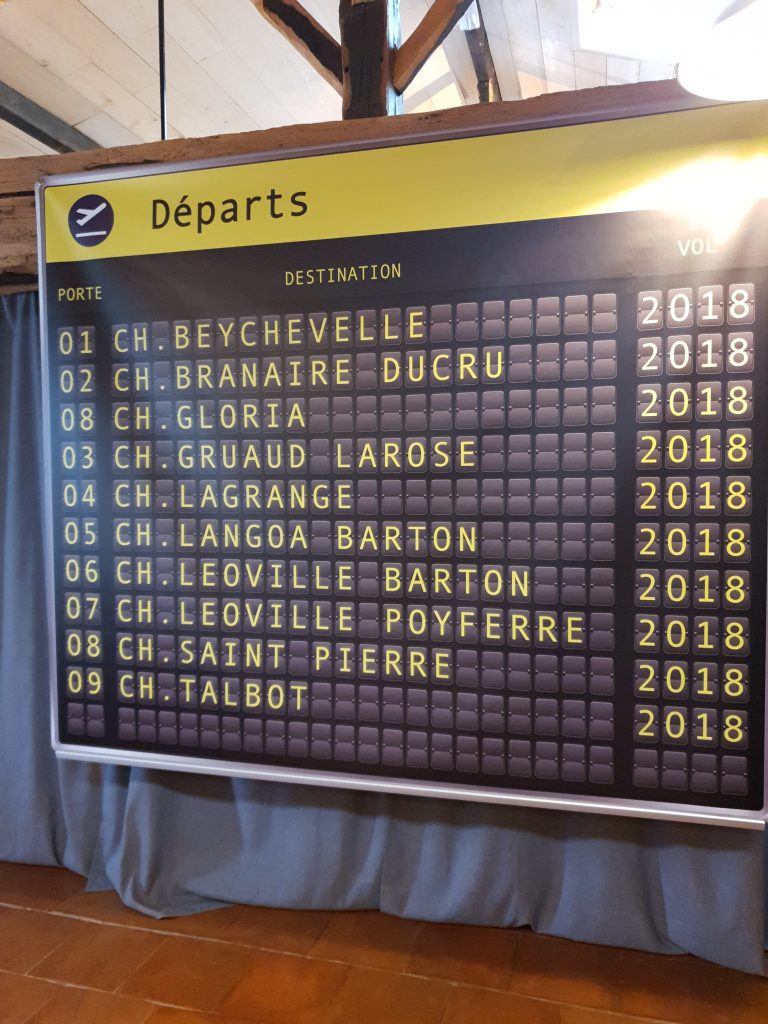
Château Beychevelle
N: Delightful, tiny bit reduced.
P: Beautiful fine-grained tannin with a sweet bite, i.e. tangy acidity encased in pillowy richness. Firm, yet gentle aftertaste. Very good.
Château Branaire Ducru
N: Sweet refined brambly cassis aromas. Ethereal and promising.
P: Refreshing and tasty, but somewhat weak on the middle palate, with a short finish. Middle of the road wine. Neither the fruit nor the tannin is outstanding. Good.
Château Ducru Beaucaillou
N: Dark, concentrated fruit that would immediately make one think of a great Pauillac or Saint Julien if tasted blind. Very suave.
P: Dense, strong, and concentrated, but carrying its 15° alcohol with grace. Long aftertaste once again not burdened by alcohol. Fresh and full of blackcurrant and berry fruit. Regal. Excellent.
Château du Glana
N: Slightly off (problem with barrels?) with prune aromas.
P: Rich, but lacks backbone. Easy-to-drink and round into a slightly harsh aftertaste. Seems unbalanced at this time with striking acidity on the finish. Needs to come together more and be retasted. OK.
Château Gloria
N: Ripe, but simple.
P: Full, with dark fruit flavors. Fruit forward with perhaps more tannin from oak than grapes. This tannin nevertheless gives character to a wine that would otherwise be just easy-going and crowd-pleasing. Oak and cedar on the finish. Good.
Château Gruaud Larose
N: Fascinating nose redolent of lead pencil, spice (cinnamon), coffee, and blackcurrant. Textbook Saint Julien. Monumental.
P: Thick, big, voluminous, and with a silky texture. Delicious cherry flavors. Serious wine with a great deal of class. Excellent.
Château Léoville Barton
N: Blackcurrant, tobacco, and that indefinable something special found only in the finest Médocs. Somewhat reserved at present, but all the signs are encouraging.
P: Starts out angular, then round with assertive, but superb quality tannin. Long textured aftertaste. Will age beautifully. Excellent.
Château Léoville Las Cases
N: Attractive, spicy, exotic bouquet.
P: Big, but restrained. One does not feel the 14.5° alcohol, the most ever recorded at the estate. Lovely silky texture going into fresh acidity and pure fruit. Cabernet Sauvignon as one dreams of finding. Superb.
Château Léoville Poyferré
N: Lovely, subtle, and classic nose with some roast coffee overtones.
P: Beautiful velvety tannic texture with a sweet bite on the finish. Loads of blackcurrant fruit and tealike tannin. Fresh, with a long aftertaste. Very good.
Petit Lion de Léoville Las Cases
You can’t help but like the cuddly lion cub peering out from underneath the famous arch… I mostly avoid reviewing second wines, but this is one of the few that deserved special mention.
N: Ripe, but ethereal berry fruit.
P: Medium-heavy mouth feel with considerable freshness and plenty of fruit. Good length and a lip-smacking deliciousness. Good to very good.
Château Saint-Pierre
N: Discreet with some meaty and Cabernet Sauvigon varietal black fruit aromas.
P: Sensual, full, and bright. Bit modern in style with plenty of oak. Mouth-puckering tannin on finish, due in no small part to the oak. Good.
Château Talbot
N: Bit reduced and not forthcoming at this time.
P: Better, with chunky tannin and a brawny flavor profile. Not the most elegant of Saint Juliens, showing some tobacco and oak along with quintessential Cabernet fruit. Needs to be retasted at a later date. Good.
SAINT-ESTÈPHE
Château Calon Ségur
N: Deep forest floor aromas.
P: Super rich and “sweet” with candied black (cassis) fruit flavors. Bit of a bruiser. Quite tannic finish, but this shows great texture and, especially, great ageing potential. Licorice and blueberry flavors. Very good.
Château Cos d’Estournel
N: Incense, toasty oak, and a powdery quality.
P: Mouthfilling and big, going on to show great development on the palate. Finishes a little had due to the oak. Richer and smoother than Les Pagodes, with a longer aftertaste, but the gap is not that huge. Tremendous blackcurrant flavours. If the oak integrates this will be a treat. Very good.
Château Cos Labory
N: Not very forthcoming at this stage. Inky, with some white pepper notes.
P: Starts out soft and attractive, then shows the hardness and austerity I usually associate with this wine. Uncompromising and sturdy. Good.
Château de la Haye
N: Very sweet, extroverted nose of ripe Cabernet Sauvignon with a little smokiness. Deep and seductive.
P: After such a bouquet, the wine is unsurprisingly round and voluptuous on the palate. Big volume then dips on the middle, but picks up again to show good acidity and tannic texture on the aftertaste. Good to very good.
Château Lafon Rochet
N: Largely withdrawn, but some encouraging underlying fruity and floral aromas.
P: Starts out quite rich with good tannic texture and concentration. Puckery mouth feel. Well-made and elegant for an appellation not always known for that quality. Long velvety aftertaste. Let us hope the aromatics come out further. Good to very good.
Château Haut Marbuzet
N: Deep, pure, serious black fruit bouquet.
P: Rich, with teeth-staining tannin. Brawny, touch dry. Plenty of oak, but also plenty of fruit. Faithful to the estate’s style. Good to very good.
Château Meyney
N: Brambly, with fine cassis fruit and coffee nuances.
P: Rich, big, meaty, and fruity. Good tannic texture. A touch dry at present. Grand cru quality as is often the case with Meyney. Very good.
Château Montrose
N: Refined, restrained bouquet with floral and cedar nuances.
P: Big, but seems curiously less massive than the second wine, La Dame de Montrose. Slightly dry finish. Everything is here to blossom in the coming decades. Great balance between dark fruit and tremendous structure. The tannin coats the entire mouth, but it is of the highest quality. Excellent.
Pagodes de Cos d’Estournel (white) – Bordeaux AOC
This wine comes from further up the Médoc peninsula i.e. is not from Saint Estèphe.
C: Pale chartreuse.
N: Pure Sauvignon Blanc aromas along with some vanilla and crème brûlée nuances.
P: Angular, mineral, and overoaked. Good, but nothing special.
Pagodes de Cos d’Estournel (red)
N: Very marked by incense and resin aromas.
P: Great tannic texture and marked acidity. Medium-heavy mouth feel. Tart and refreshing despite the alcoholic degree. Will age well. A serious second wine. Very good.
Château Phélan Ségur (sorry, no photo)
N: Showing pure aromas of spring flowers and graphite.
P: Soft tannin, good fruit (blackcurrant), and fine-grained tannin. Perhaps a little short on the aftertaste but this is probably the best Phélan Ségur I have ever tasted. Very good.
Château Tronquoy Lalande (sorry, no photo)
N: Fine, pure, and fresh bouquet with blueberry overtones.
P: Full, but a little overblown and weak on the middle palate. Still, a fruity wine with a decent finish showing this estate’s ongoing ascension. Good to very good.

